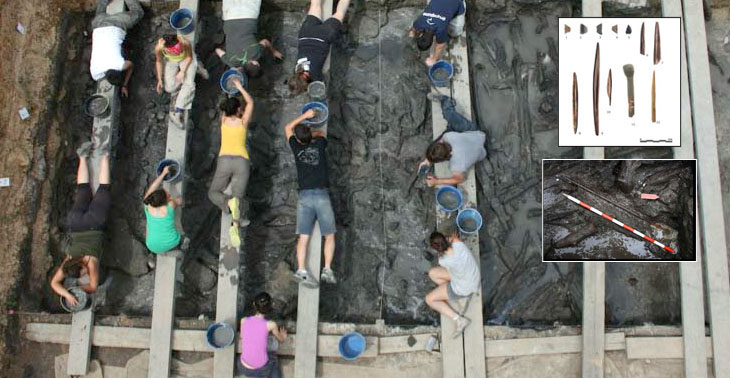Lakeside reservoir of La Draga

The La Draga Neolithic Village is located in the centre of the eastern banks of the Banyoles Lake, in a peninsula which leaves it surrounded by water on its northern and western sides.
The village was discovered in 1990, when gardens were being added to the La Draga park, and since then several digs have been carried out, both on land and under water, where the ancient Neolithic shore was located. Seemingly, La Draga was inhabited only during one moment of the ancient Neolithic by a human group from the end of the Cardium period which, according to carbon dating, existed around the middle to the end of the 6th millennium BCE. Water levels in the ancient Neolithic were 1.5 to 2 metres lower and this allowed for a wide shoreline, which is currently fully submerged. The construction of several dikes on the eastern banks of the lake from the 9th to the 19th centuries caused a significant rise in the waters and flooded the ancient Neolithic beaches.
The site is made up of several wooden cabins which were located at the lower part of the village, right along the bank, while in the higher part, separated by an 18 metre palisade running northeast to southwest, there were the granaries, community fires and waste pits.
The cabins were rectangular and measures 12 metres long by 4 metres wide and were a maximum of 3 metres in height. The walls were made of oak trunks, trussed together with hazel tree branches and possibly covered with a layer of mud. The roof, held by oak pillars, had two slopes and was formed by reeds. The granaries were paved rectangular constructions, measuring 3 by 4 metres. The walls and coverings were similar to that of the cabins. The community fires at the higher end of the village were built in shallow pits, measuring 60-180 cm in diameter and dug into the lacustrine chalk. In the fire pits, archaeologists have found objects (ceramic cups, polished stone tools and bone spears), animal remains and also a large number of cereal grains.